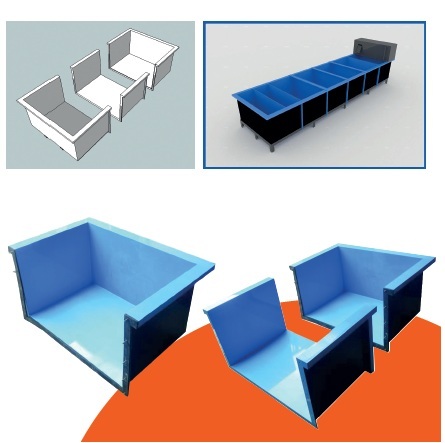Aquarium fishkeeping has always been popular. Whether it’s a small fish bowl or a thousand-gallon glass tank, an aquarium can provide quite a majestic scene.
Fishing for candidates
Decades ago, ponds were set up only as add-ons for garden landscapes. Common carp or goldfishes are placed in the pond without any good filtration system. Now, it is totally different. With the popularity of Japanese Koi, ponds have now becomes the main attraction in gardens and front garage spaces. However, there is one downside of Koi keeping the size requirement of the pond.
There are also other fish species that thrive well in ponds, such as goldfishes, a smaller version of Koi. Both cold-water fishes look great when viewed from the top. Even if various goldfishes are beautiful from the front, they are also very elegant when viewed from the top.
South Central Cichlids also do great in ponds. While they normally have dull colors when viewed from the top, they swim animatedly and it’s satisfying to see them grow. Live bearers, such as swordtails and platys, also do great in ponds, especially in large numbers.
Concrete idea
Concrete is a common material used for making large ponds. Small ponds do not benefit from concrete because hollow blocks often take up too much space. Many hobbyists buy rubber and plastic tubs or basins to use as DIY ponds.
Solving size issues
While I am fond of housing fishes housed in ponds, plastic tubs are rather limiting. Making fiberglass ponds have their advantages because they are movable; however, they are heavy.
When I went to Singapore, I had an epiphany. Their industrial water tanks were quite big, but they were made of modular panels. These tanks could be assembled in different sizes depending on the panels used. The structural design allowed for the tanks to hold water.
The panel modules were made of fiberglass. The auxillaries used were made from metal frames, screws, and gaskets. Doors and pipe connectors were attached as necessary.
Big picture
Applying what I saw in Singapore, I visualized a panel that would meet my tropical fishes’ requirements.

I made several test runs before I cam up with a working model – it was initially challenging to come up with a design that prevented leaks and panel warping. The warping issue, brought about by the amount of water they had to hold, was not much of a problem because I intended only to care for goldfishes, which didn’t require a lot of height and water surface.
After making a structural drawing and converting it to a digital output, we started fabrication. We had to ensure that all connecting parts were accurately aligned.
The two-piece panel design I made can be customized to create any length desired. They can be assembled to create many shapes, such as rectangular, L-shaped, and U-shaped ponds.
Extendable pond features
These are the features of the extendable pond.
Two-part design – The first piece is composed of the U-shaped panel with open-ended sides. The second piece is similar to the first, except it has one closed side.
Rubber Gasket – I needed a gasket that can easily be procured. I used regular black car rubber matting, sold along the streets of Banawe.
Bolts and nuts – The best kind of bolts are made of stainless steel, but I have used regular bolts for years now and they are still in good condition.
Dimensions – The panels measure 24 x 36 x 21 inches. I used a top sump filtration and added fiberglass divides as accessories.

Pros and cons
The extendable pond has been with me for more than five years. I am very happy with the outcome, especially because of its flexibility.
Initially, I made only three panels but ended up with six panels that had a total length of 151.25 inches. The additional dividers worked great for sorting goldfishes in terms of size.
The extendable pond is ideal for growing out and quarantining fish. They are also great for tortoise enclosures and small to medium dog whelping.
Do I recommend it? The answer depends on your needs. Yes, in terms of its versatility; no, in terms of its cost compared to the standard fiberglass pond.
For questions, please email [email protected].
This appeared in Animal Scene magazine’s July-August 2020 issue.
You might want to read:
– Tokyo aquarium makes an ’emergency plea’ for people to video call its eels so they don’t get too shy
– Penguin explores aquarium and visits other animals
– The first principle of aquarium fishkeeping






